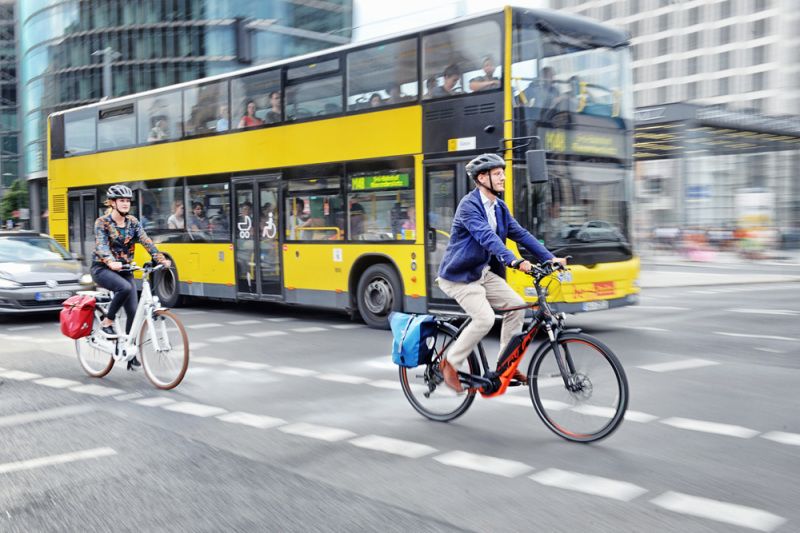Berlin plans to become safer, more mobile and more climate-friendly. In a growing metropolis like Berlin, this can only succeed if the strengths of all forms of mobility – i.e. bus, rail, bicycle, car, pedestrian traffic – are taken into consideration. Ecomobility, i.e. pedestrian traffic, bicycles and public transport, has a particular role to play here because all these forms of mobility are very efficient in their use of space. The Berlin Mobility Act will create a basis in law which takes account of all interests. This is without precedent in Germany.
Urban mobility of the future is networked mobility. Of central importance to Berlin’s concept of urban mobility is the goal of ensuring that all people in the city can get to their destination comfortably and reliably and in a way that has as little impact on the environment and the city as possible – and that this should be possible irrespective of the availability of one’s own form of transport or of physical limitations. The Berlin Mobility Act plans to improve the efficiency of the transport system as a whole. It also supports the goal of the Berlin Senate to make car traffic in Berlin climate-neutral by 2045. Moreover, the intention is to reduce the number of road traffic fatalities and seriously injured persons to a minimum (vision zero). Two of the most important measures here are to re-design dangerous junctions and to create safe bicycle lanes along all main roads.

